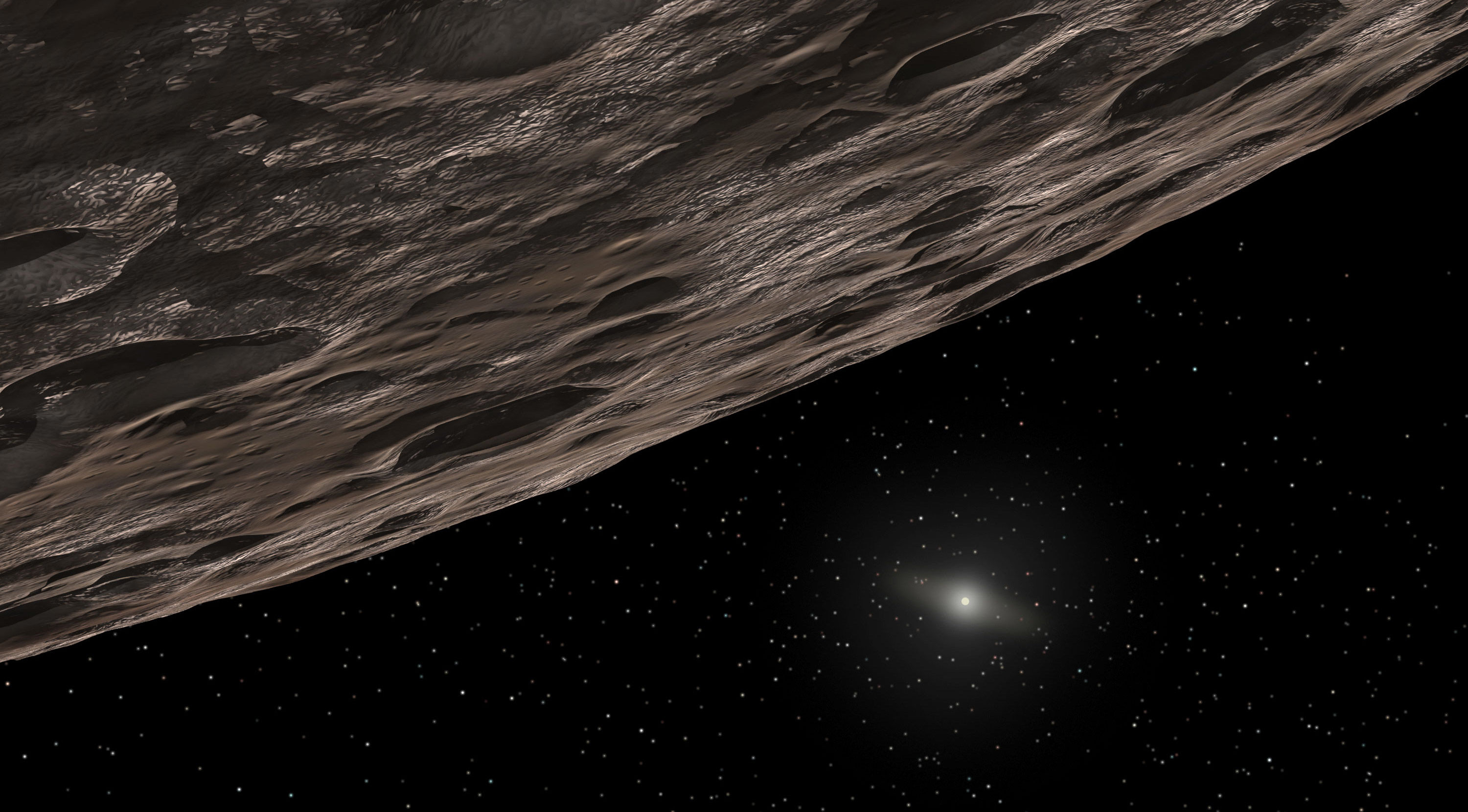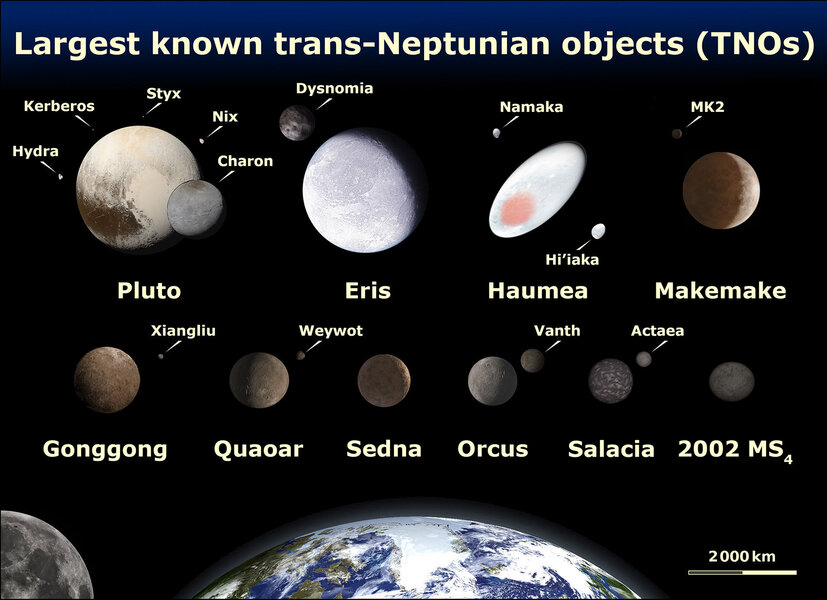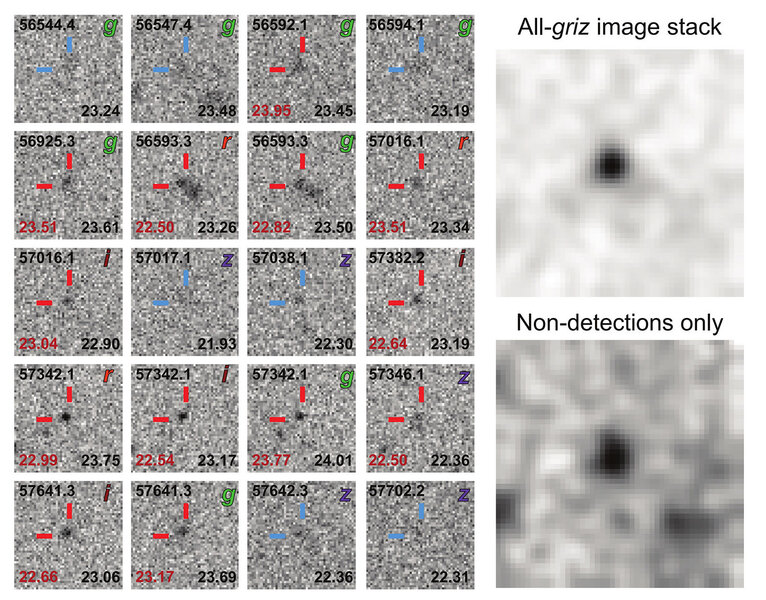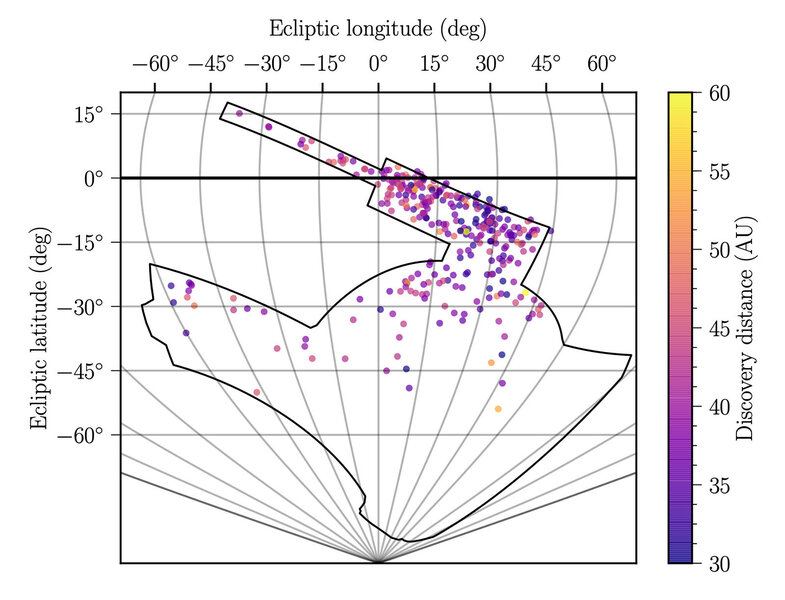Create a free profile to get unlimited access to exclusive videos, sweepstakes, and more!
Neptune's back yard just got 316 new residents

Out past Neptune lies a vast region of space, far from the light of the Sun. But it's not empty; in it are billions of small bodies called Trans-Neptunian Objects (or TNOs). Made of rock and ice, the biggest known is Pluto, and there are perhaps 100,000 bigger than 100 kilometers in diameter. The problem is, they're so far away that they are incredibly faint. Excluding Pluto (which is an exception because it's unusually big, close, and reflective, making it brighter), the first one was found in 1992.
Several thousand are now known, but that's still a tiny fraction of what's out there. Finding as many as possible is important: As the four massive planets in the outer solar system moved around in the early days after formation, they left a gravitational imprint on the TNOs, so studying these small bodies tells us about what he planets did. Also, TNOs are relatively pristine remnants of the formation of the solar system itself, so learning more about them tells us what things were like back then, and also how they've changed in the ensuing 4.5 billion years.
So the more we find the better. Well, good news: Astronomers have just found 316 more! Twist: It was done with a project designed to look at how the Universe expands, and why the vast majority of it is dark and weird.
The project is called the Dark Energy Survey. It's a huge 520-megapixel camera mounted on four-meter telescope in Chile, where skies are very dark. Over the course of six years (2013–2019) it scanned 5,000 square degrees of southern skies (for comparison, the entire sky is about 40,000 square degrees, so this is a huge chunk of it) over and again. It mapped the position, brightness, and colors of thousands of galaxies, looked for huge galaxy clusters, and examined the light from exploding stars. All of these are used to figure out what dark matter and dark energy are; between them they make up about 95% of the mass and energy of the Universe, but we know very little about them. This survey should help.
But, being a wide survey that can see very faint objects, it can also be used for other science, too. Like, say, looking for TNOs. The thing is it's not designed to do that, and that's a problem. Surveys meant to look for TNOs have a process to maximize the chance of finding them. For example, they tend to look at the same section of the sky every few hours, enough time for a potential object to move a little bit and get flagged.
The Dark Energy Survey does the opposite of that! It avoids looking at the same section of sky every night, so that any changes in atmospheric conditions (turbulent air, haze, whatever) are spread out over time, and easier to compensate for. But, while this makes it harder to use it to find TNOs, it's not impossible.
The way they did this was clever. First, they used software to look for as many “point sources” as they could — these are small, unresolved dots in the sky. Stars, asteroids, distant small galaxies, TNOs, supernovae… these are all far enough away to look like dots in the camera. Looking at the first four years of observations — 60,000 separate exposures! — they found a staggering seven billion such "dots."
Most of these are objects that don't move over time, like stars and galaxies. Eliminating those left a mere 22 million objects. They labeled these transients, meaning things that moved over time. They then employed an algorithm that searched for observations in one part of the sky taken at a different times, looking to see if a transient in one image was near a transient in another image, under the assumption that it could be a single object that moved between exposures.
If they found an object that was seen in three different images, they could then determine a rough orbital path for it, and then look for it in more images. If it was found in more than 10 images they automatically flagged it as a Trans-Neptunian Object. Any in less than six was rejected.
If it was in 6 to 10 images, they couldn't be sure. Maybe it really was in more, but the Earth's atmosphere was bad those nights and smeared the object's image out, making it too faint to see.
So what they did was calculate where the object would be in all the images where it couldn't be seen directly, and shifted all the images to center the object in them. Adding the images together then boosts the object's signal, making it brighter. So if they saw something in the added images they called it a hit, and a miss otherwise.
In the end, they found a total of 316 TNOs. Of these, 139 were discovered for the first time (some had been discovered using other telescopes, and some had already been seen in Dark Energy Survey images before and previously announced). That's roughly 10% of all known TNOs!
The objects they found range in distance from the Sun of about 4.5 billion to over 13 billion kilometers (Neptune is about 4.5 billion km out, for comparison), but seven were extreme, lying more than 22 billion km out, and one was over 37 billion kilometers away!
They also found several different classes of TNOs. Some (54 in total) are what are called detached objects, so far out they aren't hugely affected by Neptune and planets closer in to the Sun. 87 are resonant objects, which means the time they take to orbit the Sun is some simple ratio of Neptune's period, which means they can be strongly affected by it. Seven of the ones found are Neptune Trojans, meaning they share Neptune's orbit but stay 60° ahead or behind it as it moves around the Sun; of those four are new discoveries.
And they're not done. They only looked at four of the six years of the survey, and they expect to be able to find more TNOs once all the data are processed. They'll be able to do better rejecting stationary objects as well as find more transients, especially since the total survey will see to fainter object brightness.
Pretty cool. One of the beauties of surveys like this is that they look at a lot of the sky and look for very faint objects, so even though they may be designed to look for one kind of thing, or even many kinds of things, there are others that can be found as well. And, because these data are digital and stored, they can be mined for more objects later as people come up with new ways to look for them.
It may be dark and cold out past Neptune, but we're just starting to shine a light on what's out there.





























